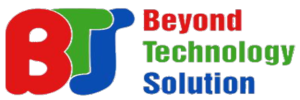
1. PROJECT OBJECTIVES
- Design and implement an IoT based smart farming monitoring and controlling system for mushroom.
- Evaluate the benefits of the proposed solution compared to conventional solution.
- Improve the productivity and reduce the cost toward the purpose of massive manufacturing in future.
2. PROJECT DURATION AND PLACEMENT
The project is deploy at Thu Bon Agriculture Cooperative (TBAC), Duy Xuyen District, Quang Nam Province, Vietnam, from Aug. 2018 to Dec. 2018. TBAC was established on Apr. 17, 2017. Its mission is to become a new symbol of cooperative in terms of green and sustainable integration and development that can help the farmers with high priority on their benefits.
With the non-stop efforts of all the members and the local goverments, TBAC has built a value chain of production – processing – consumption of agriculture products. As a member of TBAC, the farmers will be supported by the experts in transferring hi-tech agriculture and consulting agriculture consumer markets.
TBAC especially focuses on the processing step to expand the surplus value of agriculture products and reducing the impact of dynamic consumer markets. In addition, the companies that collaborate with TBAC will be surely served by high quality products, clear origins, and competitive prices.
3. DESIGN AND IMPLEMENTATION
3.1. Environment analysis and design requirements
- Area: 15m2
- Location: Thu Bon farm; three sides are directly contiguous to the East, West, and North; and the other side is contiguous to the conventional mushroom area.
- The door is allocated toward the North
3.2. Design requirements
- Protection from heat
- Protection from insects
- Water supply system to a big tank in the mushroom area
- Power supply with circuit breakers installed
- Sensors
- Cameras
- Controller center
- Actuators
- Internet access
3.3. Supplies and equipment
- Protection from heat and insects: Styrofoam PE-OPP 15mm, net to prevent from insects, styrofoam glue, iron, door, and other supplies (ropes, nails, screws, etc.).
- Power and water supplies: electric wire, water pipes, water tank, circuit breaker, power supply, and other supplies (plastic glue, pipe splitters, vanes, etc.).
- Sensors and actuators: Temperature sensors, light sensors, humidity sensors, water level sensors, cameras, wifi access point, fans and ventilation, misting devices, lighting devices, water pumps, and controller center.
3.4. System implementation and design





3.5. Functions
- The system enables to monitor the temperature, humidity, and light as well as other conditions of the mushroom by sensors and cameras using a smart phone in distance.
- The system can automatically control the actuators, i.e., fans, ventilation and misting devices, to meet the mushroom parameter requirements by a smart phone in distance.
- The system can store all the parameters and video for the purpose of analysis.
4. RESULTS AND EVALUATION
4.1. Advantages
- Solve the low humidity and high temperature in the dry season in the Central Vietnam.
- Provide a simple and efficient solution for monitoring and controlling important parameters of a mushroom that meets the growing of mushroom
- All the activities are automatically by a smart phone or web server.
- All parameters and video are stored for analysis.
4.2. Disadvantages
- Ralatively high cost (can be improved if massive deployment).
- Only instant parameters are displayed and thus not good for manual control (can be improved in massive deployment with all-time display mode).
- No alarm for early detection related to mushroom disease (can be updated by using image processing obtained by cameras together with historical data analysis of seasonal diseases).
- In a very short duration, we cannot evaluate the mushroom quality between the new solutions and the conventional solution.
5. ACKNOWLEDGEMENT
This work was also supported by a Research Environment Links grant, ID 339568416, under the Newton Programme Vietnam partnership. The grant is funded by the UK Department of Business, Energy and Industrial Strategy (BEIS) and delivered by the British Council. For further information, please visit www.newtonfund.ac.uk.
